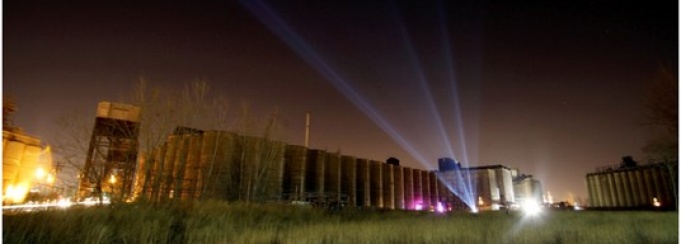Why Planning in Buffalo

Engage in our city and region
Study in Buffalo is distinctive, because we engage you in our city and region. In your studies with us, you become involved with city governments and neighborhood groups, urban and rural environments, citizens and leaders, and the challenges they face: both troubling problems and fascinating opportunities. We do this through class exercises, internships or independent study, and final thesis or project, and especially through our client-based workshops, which we call “studios.”
In studio, our students have planned a wind energy project on former industrial property by Lake Erie—and it has now been built. For a neighborhood group, they prepared a proposal for an African-American Heritage Corridor, linking the avenue’s fine architecture, historic churches, jazz heritage, and sites from the underground railway. For a fast-growing suburban townships, they have prepared proposals for integrating pathways, parks, stream corridors, wetlands, and land-development regulations into a rich open space network. For an old industrial neighborhood marked with monumental waterfront grain elevators, they have proposed an award-winning plan for revitalization that builds on the industrial heritage. For a rural county, they have proposed policies that take advantage of wilderness, small town character, and skiing for tourism opportunities. And for a nonprofit organization owning a plethora of railway cars and memorabilia, and they are planning a national-scale railway heritage attraction.
Take your scholarship global with faculty who are international leaders in their fields
If these activities entice you, Buffalo is a great place to experience them! In view of the extensive relationships we have with local agencies, municipalities, and groups, you as our students have unparalleled access to learning by engagement. And in this learning, you will be taught by faculty nationally recognized for research and scholarship in their fields. While learning with the Buffalo area as your living laboratory, you will be taught by faculty that also has extensive international experience. Our faculty members have backgrounds of involvement in places as widespread as the Baltic states and the Caribbean states, China and India, and Europe and Southeast Asia. We infuse our study of locality with international awareness.
Become a part of our diverse and lively community
Adding to international character are our students: about 30% regularly coming from abroad. And our domestic students will find that our faculty and students reflect America’s complexity and diversity. Our school is deeply committed to fostering a diverse and inclusive learning environment.
Collaborate across the disciplines, from architecture to public health to law
We are also distinguished by close collaborative relationships with our neighboring Department of Architecture. Though most of our students progress very well with undergraduate studies in sciences, humanities or social sciences, others come with a background or interest in design and can, therefore, benefit from involvement with our architecture-neighbors. Our faculty also work closely with leading researchers at UB and other universities in fields as diverse as public health, medicine, law and geography.
Study at a top-ranked program under internationally distinguished faculty - all at a reasonable price
In comparative rankings, we are among the major urban and regional planning programs in the Northeast, including ones in the Ivy Leagues. With PhD degrees from the finest institutions, our faculty is selected for national and international achievement in planning. You learn knowing that our Master of Urban Planning has the Planning Accreditation Board’s full accreditation—the standard that all professional planners recognize. Yet for New York State residents we can offer this education at reasonable state tuition. And for the majority of our students (55% as of last count) we can offer scholarships, teaching assistantships, research assistantships, and stipends.